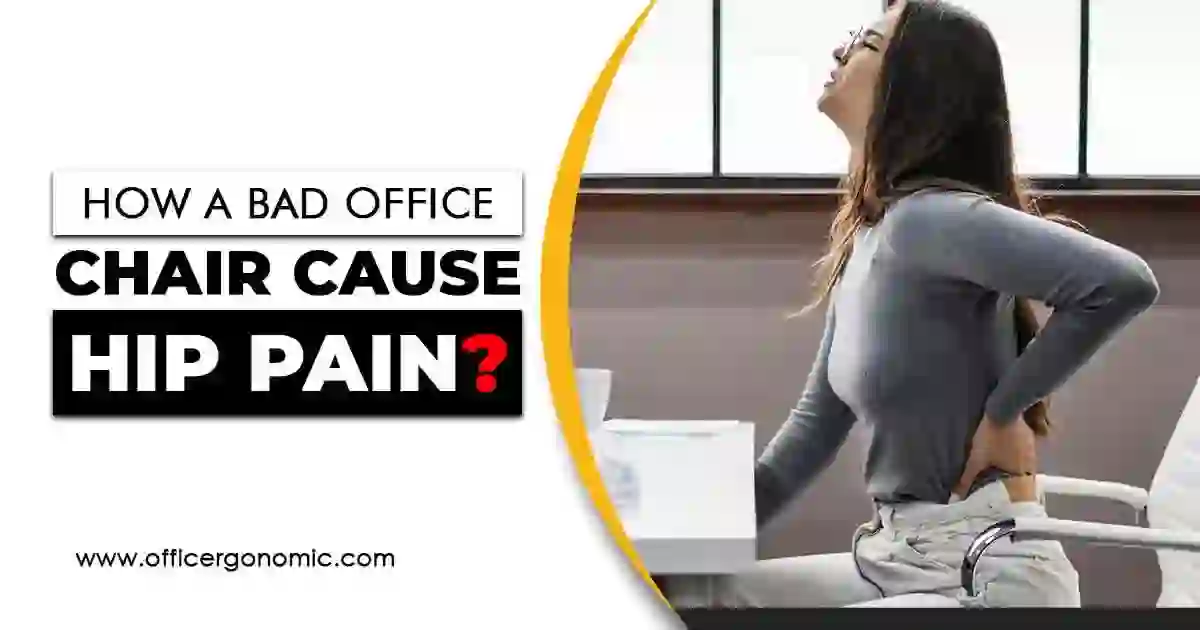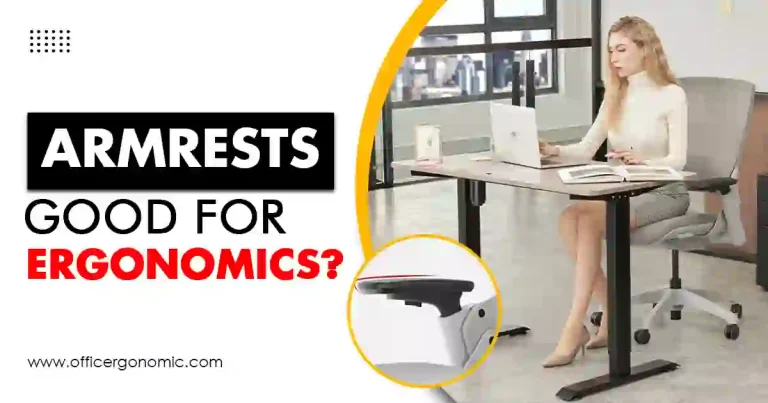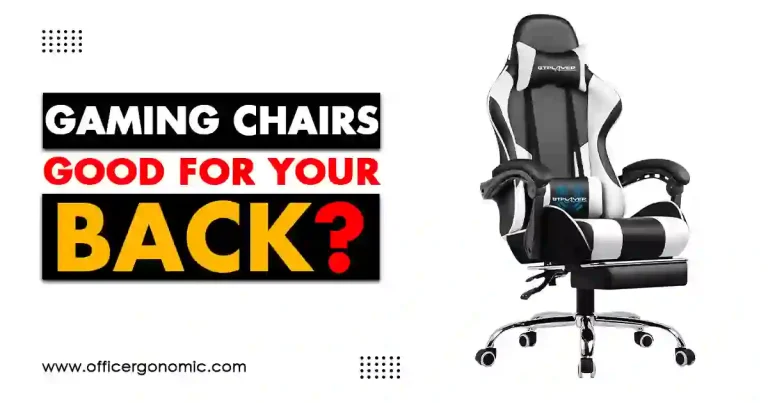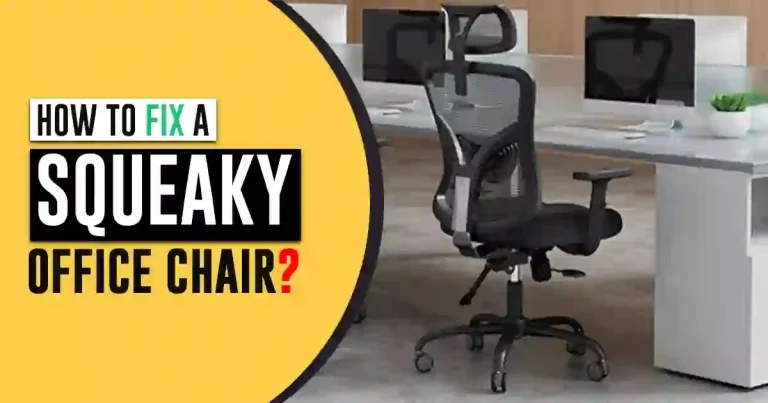How Bad Office Chairs Cause Hip Pain?
Over the years, offices and workplaces have notably transformed. Aesthetics, ergonomics, comfort, and productivity- every aspect has been revolutionized by modern technology. Consequently, the efficiency of employees has amplified. But all these perks come with an ergonomically improved office interior.
An office chair is one of the most important parts of office furniture. In a sitting workstation, an individual is bound to spend approximately 8 hours in a chair daily. Sitting in an office chair all day long can significantly affect your physical health and well-being. Hip pain is commonly experienced among employees who sit 9 to 5 in their office chairs.
In addition to the excessive duration of its use, the bad quality of an office chair is also responsible for the discomfort in the hip area. In this article, we will have a detailed look at the causes of hip pain while sitting on a bad office chair.
How Bad Office Chairs Cause Hip Pain?
We often address the adverse effects of a bad office chair as pain in the lower back, shoulder distress, stiff neck, weight gain, lack of concentration, poor circulation of blood, bad posture, etc. What we do not talk much about is hip pain caused due to a bad office chair.
Before searching for how bad office chairs cause hip pain, first, we will discuss the anatomy of the hip joint. Also, we will analyze the effects of sitting for an extended time on the hip joint.
Anatomy of Hip Joint
Human anatomy is quite interesting to know. It can provide information about the causes of pains in the body. Talking about the hip joint, is a ball-and-socket joint. Being the largest joint in the human body, the hip joint is responsible to support upper body weight and help to maintain balance.
The hip joint establishes a link between the femur and the pelvis. Femur is the thigh bone which has a ball on top of it. The ball of the femur fits into the socket of the pelvis.
The arrangement of the hip joint allows easy mobility. Hip flexors at the front of the hips and other muscles and ligaments hold the hip joint firmly. As a result, you can uplift your knees easily and walk, run, kick, or sprint.
The hip flexors also assist in stabilizing the vertebral column by coordinating with gluteal and trunk muscles. These functions exhibit their significance for maintaining a good posture.
Sitting puts a lot of strain on the hip joint. While sitting, the hip flexors are shortened and become stiff. Prolonged sitting causes the weakening of hip flexors over time. This can lead to hip pain, back pain, poor posture, etc.
Location of Hip Pain
Why does your hip hurt after sitting in a chair? This question can be answered by the fact that hip pain is often experienced as a result of sitting in a chair that is not properly adjusted or poorly designed. To make necessary adjustments in your office chair ergonomically, you will have to identify the exact location where you feel pain in your hips.
If you are feeling pain in the upper thigh or the outer part of the hip while sitting in your office chair, the problem is caused by your hip muscles, tendons, and ligaments. On the other hand, your hip bones and joints are responsible if you are undergoing discomfort inside your groin area in a sitting position.
Reasons Why a Bad Office Chair Causes Hip Pain?
Let’s explore why our hips hurt while sitting in a bad office chair. Also, we will be suggesting you some tips to avoid the reasons causing pain in your hips. Stay with us so you can be safe in the future.
1. Lack of Lumbar Support
Lumbar support is necessary to maintain proper posture as it holds the weight of the upper body. If your office chair is unable to provide adequate lumbar support, you are unable to maintain a good posture and are more likely to slouch. Your lower back becomes rounded and causes the pelvis to incline forward.
A forward-tilted pelvis puts additional stress on the hip joint. As a result, the muscle and ligaments present in and around the hip joint become tight. This may lead to fatigue and discomfort in the hip.
To avoid this, choose an office chair with adjustable lumbar support so you can set it to fit the natural curve of your spine. Also, a chair with an adjustable backrest can help you maintain good posture and prevent hip pain.
2. Poor Seat Design
A poorly designed seat can itself be a cause of hip pain. You feel distressed if your seat is too hard or too soft. The width of your office chair seat can also be detrimental if it is too narrow. A narrow seat puts immense pressure on your hip joint and bones which will cause hip pain.
To find the best-seated position for hip pain, look for an office chair with a seat that is padded and comfortable but firm. Also, the seat should be of appropriate width (approx. 17-20 inches) so that your hips are relaxed.
You can opt for office chairs that have contoured seats for additional support. The contoured seats are designed specially to fit the natural curve of the hips. You can also explore office chair alternatives such as balance ball or swooper chairs as they really help with posture improvement.
3. Improper Height Adjustment
Another important factor in preventing hip pain is the height of your office chair. While sitting in your chair, place your feet flat on the ground rather than on an uneven surface. Moreover, your knees should be at a 90-degree angle. If the height of your chair is too low, it will place your knees higher than your hips.
On the other hand, if your chair is too high, it will cause your feet to dangle. Both cases will result in pressure on the hip joint which will cause discomfort in your hips. To eliminate this factor, it is advised to make sure your office chair is properly adjusted to a suitable height. You can purchase a footrest if your chair is not adjustable.
4. Lack of Mobility
Another reason for hip pain while sitting in a bad office chair is that it may restrict your mobility. A bad office chair may not roll or swivel easily. When you try to reach objects on your desk or to interact with colleagues, you may feel refrained while twisting or turning your hips. This can cause tightness in your hip joint and lead to aches and uneasiness over time.
To eradicate this problem, you can remove the armrests of your chair if they aren’t adjustable. Sticking with an office chair that restricts your movement will add to your hip pain, so you can choose an office chair with adjustable armrests.
5. Forward Tilt Seat Angle
An office chair with a forward tilt can make you feel like your chair is forcing you into a slumped position. As a result, it will encourage you to sit away from the backrest with a poor posture. When you sit in an office chair with a forward tilt, your pelvis may lean forward, which puts extra stress on your hip joint.
If your chair lacks adjustability for forward tilt and you sit in this position for a long period, this can be painful. To reduce hip pain, it is recommended to find a chair with an adjustable forward tilt so that you may adjust the chair’s tilt angle to a comfortable position.
Moreover, taking frequent breaks and stretching can also help alleviate hip pain caused by prolonged sitting.
Types of Hip Pain Caused by Sitting in a Bad Office Chair
You may suffer from different types of hip pain when sitting on a bad office chair for prolonged periods. Some of them are discussed as follows:
1. Hip Bursitis
Hip bursitis, also called Trochanteric Bursitis or Trochanteric Bursa, is a sort of hip pain that can be experienced as a result of repeated movements or overuse of the hip joint. It causes inflammation of small sacs of fluid, known as bursae, that provide cushioning to the hip joints. Hip bursitis is a painful condition that causes tenderness in the hip joint, due to spending a lot of time sitting in a bad office chair that offers insufficient lumbar support.
2. Hip Flexor Strain
As mentioned earlier, the hip flexors are the muscles present at the frontier part of the hips. These muscles allow you to bend at your waist and lift your leg. Sitting in a bad office chair for plenty of time can cause tightness and weakness of hip flexors. Resultantly, you will have to bear a lot of strain on hip flexors. You will find difficulty even performing the simplest tasks such as sitting or standing.
3. Hip Joint Pain
Your hip joint itself can hurt if you sit for long periods of time in a bad ergonomic chair. Due to residing in a bad office chair, the hip joint is more likely to become stiff and cause pain. Chances to face such a painful situation multiply particularly if the chair lacks adjustability or proper support. Your groin or hip area can suffer from pain. If the condition intensifies, it may initiate severe pain even after minimum movement or the slightest pressure.
4. Femoroacetabular Impingement
Femoroacetabular Impingement (FAI), also known as hip impingement, is a condition related to bone deformation. Knowing the hip joint anatomy, this is a ball and socket joint. When an extra bone grows along the ball or socket or both ball and socket, it will result in hip impingement. Due to this abnormal growth, the ball of the hip joint rubs against the socket during movement. Pinching of the ball and socket causes damage to the hip joint. As a result, your active movement becomes limited and you may suffer from arthritis later on.
5. Tendinitis
Sitting in a bad office chair for too long hinders you from keeping a proper posture. A poor sitting posture and overuse of hip tendons by prolonged sitting can cause stretching of the tendons present in your hips. The stretched-out hip tendons can lead to tendinitis. Tendinitis is inflammation in the hip tendons that can cause acute hip pain. Tendinitis causes tenderness in the hip joint. If you are suffering from this pain, you may feel difficulty while sitting, walking, and even lying down.
6. Sciatica
The sciatic nerve runs down from the lower back through the end of the legs. Sciatica is a condition where the sciatic nerve is irritated or becomes compressed. Sitting for extended periods in a bad office chair can cause the hip and back muscles to become stiff. Stiffness puts pressure on the sciatic nerve which, as a result, will cause sciatic pain. Sciatic pain may aggravate while sitting or standing and can cause your hip, buttock, or leg to tingle or become numb.
7. Lower Back Pain
Lower back pain is a common complaint among office workers, and it can be caused by sitting in a bad office chair for a very long time. When you sit in a chair that lacks proper support or adjustability, your spine may become misaligned or compressed, which can cause pain and discomfort in the lower back. This pain may radiate to the hip or buttock area (then called referred pain) and may be exacerbated by sitting or standing.
Final Thoughts!
In addition to failing to select the proper ergonomic office chair, lack of adjustment and bad sitting posture may result in discomfort and pain in the hip or groin area. The chair must be adjusted to the correct height and angle and your feet should be flat on the ground. Also, keep your shoulders relaxed and position your hips and knees at a 90-degree angle.
To reduce hip pain, sitting on a good ergonomic office chair is mandatory. You may also consider using a standing desk or simply taking frequent breaks to stand up and stretch can also help alleviate hip pain. In addition, you should take exercises like hip extension, calf raises, and spine twists, so you can have improved blood flow and no pain.










